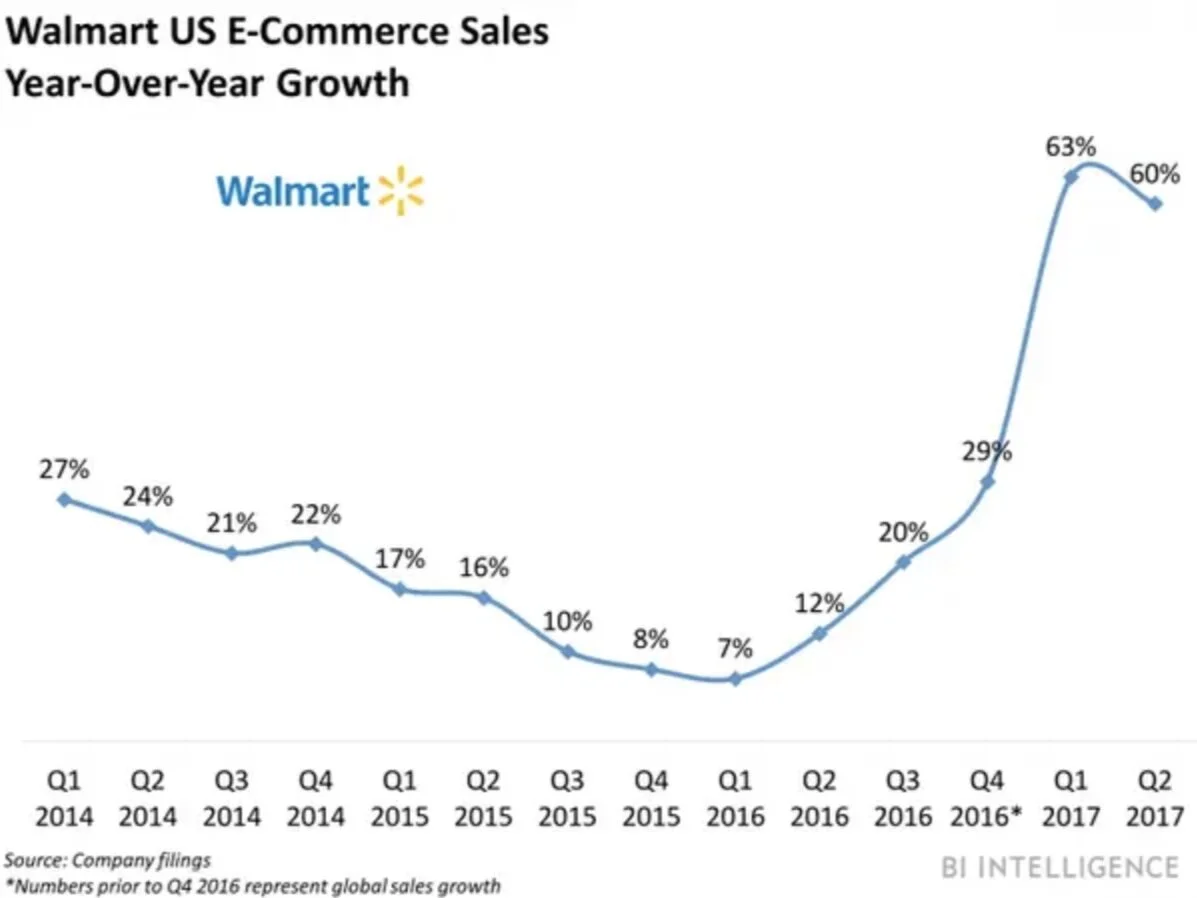Walmart announces speedy returns program
By Daniel Keyes | Oct 10, 2017
This story was delivered to BI Intelligence "E-Commerce Briefing" subscribers. To learn more and subscribe, please click here.
Walmart has announced Mobile Express Returns, a new program that aims to make returns of online and in-store purchases fast and painless, Business Insider reports.
The program will launch in November and be immediately available for orders sold and shipped by Walmart.com. In-store purchases and online orders from third-party sellers will be eligible for the program in the near future, and the retailer plans to make the program available in all 4,700 of its US locations.
Mobile Express Returns should create a fast and easy process for product returns.
To utilize the new program, customers will use Walmart’s app to get a QR code for their return before they go to the store. They will then scan the QR code at a dedicated Mobile Express Lane inside a Walmart location to immediately refund the purchase.
As of December, returns of certain products like shampoo, cleaning supplies, and cosmetics may not require a physical return, with Walmart instead providing a refund immediately. The company is employing technology to make sure consumers don't take advantage of this “keep it” option.
The new offering may get more consumers on Walmart.com, in Walmart stores, and on its app.
Allowing consumers to make returns with a quick trip to the store may draw them back to Walmart.com for future sales, as 62% of consumers say they are more likely to shop online if they can return in-store.
Getting customers in-store for returns could lead them to make purchases while they’re there — returns-centric startup Happy Returns found that 25% of shoppers making a return buy something else in the process.
The program will also get more consumers to download and use the Walmart app, giving the retailer more opportunities to convert sales on the platform.
Offering fast in-store returns will help Walmart leverage its brick-and-mortar network, which is important as Amazon looks to expand its own. Walmart has a store within 10 miles of approximately 90% of the US population, and that proximity makes the option of in-store returns even more attractive. Amazon cannot match that network yet, but it is working on it via its partnership with Kohl’s, which includes returns, as well as its recent acquisition of Whole Foods. As such, it is important that Walmart makes the most of this advantage while it still has it.
Brick-and-mortar retailers are caught on the wrong side of the digital shift in retail, with many stuck in a dangerous cycle of falling foot traffic, declining comparable-store sales, and increasing store closures. Over 8,600 retail stores could close this year in the US — more than the previous two years combined, brokerage firm Credit Suisse said in a recent report. Meanwhile, e-commerce pureplays are riding the rise of digital commerce to success — none more so than Amazon, which accounted for 53% of online sales growth in the US last year, according to Slice Intelligence.
In response, many brick-and-mortar retailers have started to use omnichannel fulfillment methods that leverage their store locations and in-store inventory in order to better compete in e-commerce. These omnichannel services, including ship-from-store and click-and-collect, can help retailers manage the transition to digital by:
Increasing online sales by offering cheaper, more convenient delivery options for online shoppers.
Limiting the growth of shipping costs as online sales volumes increase by leveraging store networks for delivery.
Keeping stores relevant by turning them into fulfillment centers that pull customers in to pick up online orders.
However, few retailers have mastered these new fulfillment services. While these companies have spent years optimizing their supply chain and logistics networks for delivering goods to their stores or directly to customers’ doorsteps, most have yet to figure out how to profitably bring their store locations into the e-commerce delivery process.
Jonathan Camhi, research analyst for BI Intelligence, Business Insider's premium research service, has laid out the case for why retailers must transition to an omnichannel fulfillment model, and the challenges complicating that transition for most companies. This omnichannel fulfillment report also detail the benefits and difficulties involved with specific omnichannel fulfillment services like click-and-collect, ship-to-store, and ship-from-store, providing examples of retailers that have experienced success and struggles with these methods. Lastly, it walks through the steps retailers need to take to optimize omnichannel fulfillment for lower costs and faster delivery times.
Here are some of the key takeaways from the report:
Brick-and-mortar retailers must cut delivery times and costs to meet online shoppers’ expectations of free and fast shipping.
Omnichannel fulfillment services can help retailers achieve that goal while also keeping their stores relevant.
However, few retailers have mastered these services, which has led to increasing shipping costs eating into their profit margins.
In order to optimize costs and realize the full benefits of these omnichannel services, retailers must undertake costly and time-consuming transformations of their logistics, inventory, and store systems and operations.
In full, the report:
Details the benefits of omnichannel services like click-and-collect and ship-from-store, including lowering delivery times and costs, and driving in-store traffic and sales.
Provides examples of the successes and struggles various retailers have experienced with omnichannel delivery.
Explains why retailers are having trouble managing costs with their omnichannel fulfillment efforts, which are eating into their profits.
Lays out what steps retailers need to take to optimize costs for their omnichannel operations by placing inventory where it best meets customer demand.
Article was originally published here.

